
The following is a guest article by Mike Sedzielewski, co-founder and CMO of Voucherify, a coupon and referral infastructure through API.
2016 was the year when the marketing technology mantra materialized. The predictions of turning every business into a connected system of digital services became real. The data-first approach and microservices are becoming a standard in the marketing and sales departments of forward-thinking companies. What makes this possible? APIs.
The data speaks for itself. In the last year:
- Over $500M was invested in API companies, not including a few massive acquisitions and Twilio’s IPO.
- ProgrammableWeb (an API directory) has indexed more APIs than ever befores, listing over 16,000 items overall.
- Market leaders like Adobe, Marketo, Twitter, and Apple either opened or revamped their API and developers’ platforms.
Why APIs? Why now?
APIs are the fuel of the digital economy and are now set to burst onto the ecommerce landscape. What drives all this, you ask? Value. In one of his recent articles, Scott Brinker says:
While there will still be plenty of software applications with UIs for us humans, increasingly businesses will need to orchestrate and enhance these applications programmatically through APIs — as well as create their own custom-tailored software on the back of these services.
In other words: APIs allow your developers to build tailored software you need faster. Imagine you want to automate your marketing operations, one way to do this is to research off-the-shelf products. But it often happens that they aren’t 100% consistent with the way your team works. You clearly don’t want to change your process just because of the limitations of your tools.
That’s where APIs jump in — they enable you to build software which fits into your process and whose development doesn’t take ages to complete. API platforms have another advantage; often, they are way better than your internal tools. Matt Murphy nails it when he says:
They work better and provide more flexibility than APIs that are built internally. Companies often underestimate the amount of work that goes into building and maintaining the functionality that they can now get from a third-party API. Finally, third-party API developers have more volume and access to a larger data set that creates network effects.
These network effects can manifest themselves in everything from better pricing to superior SLA’s to using AI to mine best practices and patterns across the data.
Note: if you’re not familiar with the API mechanics, you can read more about it in Michael Patterson’s article.
Is it for you?
If you want to participate in the API economy and prepare yourself for digital transformation, you should first understand a few principles. One of the most important is being able to evaluate the basics of an API’s suitability and maturity. In this article, I want to guide you through the process of API provider drilldown. I want to show you what makes it trustworthy and what it takes to integrate it into your ecommerce systems.
Ultimately, I’d like you to leave with a basic understanding of how to use third party APIs to build data-driven and experiment-oriented ecommerce environments — which also happen to be a privilege of market leaders with huge IT departments like Etsy or Zalando.
3 exemplars of good ecommerce APIs
To support my article, I’m going to screen 3 examples of reliable ecommerce APIs: Contentful, Shippo, and LaunchDarkly. They’re not massive, well-known API players like Stripe or Twilio. I’d rather focus on smaller, not that popular (yet!) services which have already been helping thousands of customers around the world. (Side note: all of them managed to raise millions in funding over the last few years).
But, of course, there are many more of them:
What makes a good ecommerce API — a checklist
Now let me explain a few basic tech requirements you should have for the API platform.
When building or expanding your business in this fast-paced industry, your IT infrastructure (and thus the API you’re incorporating) should feature 4 principles:
- Onboarding speed
- Pricing flexibility
- Interdepartmental connectivity
- Business continuity
How are the aboved translated into the requirements of API platform vendors?
Onboarding speed
To achieve onboarding speed, the API vendor should do whatever possible to reduce the total cost of integration. This includes, first and foremost, providing your developers with thorough documentation which should include quickstart tutorials, a dozen practical examples, and interactive console.
On top of this, the thing that really speeds up the integration are software development kits for popular programming languages. Extensions or integrations with major ecommerce tools are also nice to have.
But that’s still not really enough. They should also take care of non-dev users. A help center with self-help guides, live chats, a use cases section and, most importantly, intuitive user interface should be the things you check first.
Pricing flexibility
When it comes to pricing flexibility, it’s critical to confirm if the pricing model is reasonable, meaning will it enable you to scale without killing your budget. (I’ll explain what that means in the examples).
Good platforms offer a product assortment, allowing you to select different product packages which are most useful for the jobs you have at that moment, e.g., often you don’t want to pay for the highest level of support provided as you simply don’t need it, but it’s good to know you can reach for it anytime.
Interdepartmental connectivity
Although APIs are meant to support developers in building functionality faster, they should not omit other departments. Data visualization is a good example here; by providing other departments with a web dashboard that includes reports, you can reduce communication with IT. Likewise, a simple administration web console will often take the software maintenance burden off your developers’ shoulders.
Business continuity
Finally, you should familiarize yourself with the requirements your CTO would be interested in. You don’t have to go in-depth, a basic understanding will help you carry your idea through to your tech team.
- Integrations — keep the API in sync with your systems. Modern applications can talk to each other using the REST protocol and so should the API platform you want to use. On top of that, the API vendor should provide data import/export tools and other built-in integrations for the system you already use. Thanks to them, you can increase your software development savings.
- Webhooks — this is another feature helping to keep your data in sync. It streamlines the notifications the API sends when important events take place, e.g., something stopped working or a new lead appeared. This is also useful when you are thinking about using integration marketplaces like Zapier or IFTTT.
- Role-based access control — this is self-explanatory. Big teams almost always require mapping of their workflow with system rights and workflows. The API platform should let you control access read/edit rights by administrators.
- Audit logs — as an extension of the previous point, a security and compliance team will control and monitor the access to information within the organization so make sure that any API vendor you want to work with supports this too.
- Reporting — reports actually demonstrate real value gained from the use of an application. Different stakeholders in your company expect different answers, therefore the API platform should offer flexible reporting mechanisms including several data export types, such as raw data, charts, or scheduled reports.
- Self-hosting — several industries are still unable to upload their data to the cloud, this is why they might be interested in hosting all of their software offers on-site and in managed private installations.
- SLA — depending on the business importance of the functionality you get from the API, you need to pay close attention to the SLA policy of the vendor. In the case of the API you want to monitor two metrics: uptime — e.g., a promise that the service will be available 99.9% of the time, and the response time — how fast the API responds to your requests. This is important because this time usually has a direct impact on your service experience. When screening your providers, watch out for subpages showing historical metrics, e.g.: https://status.twilio.com.
- Support — there are two elements to pay attention to, not only for API platforms but for all SaaS in general. The first one is response time based on the issue severity. The second is the medium used when dealing with issues (email, phone, live chat, etc.). When the API is critical, you want to ensure that the plan you subscribe to offers proper response times and a phone on-demand support option.
Alright, so we defined our screening checklist. Now, let’s see how these 3 ecommerce APIs rank against it.
Example #1: Contentful
Contentful is a revamped CMS. To offer seamless content delivery for today’s multi-device and multi-screened world, they’ve enclosed the CMS functionality in the API and exposed a web interface for editors. By doing so they achieved two goals:
- They tamed the integration challenges faced by developers who are working on creating new content experiences, e.g., how to separate the content from the display.
- They provided a truly effective “create once, publish everywhere” setup. Marketers create modular content, and then it’s up to the developers to connect it to different devices and applications.
The pool of possible use cases is large. But the scenario where Contentful really pays off is when you have a number of content writers who create copies delivered in multiple formats to dozens of different marketing channels (e.g., several email/SMS campaigns, countless landing pages, mobile apps, printed fliers, multi-language sites, etc.). It seems that in the world of personalized marketing, this is a common problem for SMBs, prominent players like Spotify, government institutions such as the British Museum, and NGOs too.
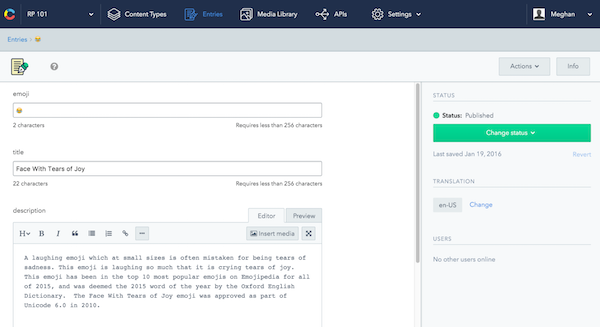
Let’s go through our checklist to better understand what it takes to integrate with Contentful.
Pricing — Contentful’s plans are a mixture of usage limits and different feature configurations. They range from 0 to $949, plus they offer custom solutions in the enterprise plan. The free plan has 10,000 records and 50,000 calls per month. Think of this as a database storing 500 products descriptions (images + price + a dozen extra text fields). The limit then allows for 100 impressions of every product. Of course, this is assuming that you get a fresh copy from Contentful every time. You don’t have to though, with a proper caching policy you can significantly reduce the number of requests.
Don’t be afraid if you exceed the limit. Instead of forcing you to upgrade to the higher plan, Contentful will offer you pay as you go at $0.15 for each additional 1,000 requests. This is one of the beauties of API solutions, they don’t require upfront costs and they smoothly scale up with your business; ultimately, you pay only for what you’ve used.
Onboarding — when it comes to software development integration, Contentful is actually a role model for the others. First of all, there’s clear documentation covering quick start instructions together with thorough guides about advanced use cases. Secondly, they provide SDKs for every popular programming language so your coders can kick-start the integration in minutes. Thirdly, the community Contentful has been actively building over the last couple of years has contributed several valuable extensions and integrations for many other platforms and applications. Finally, the well-designed REST API and advanced webhook mechanism help you to publish the content through any channel and system.
As to non-developer user onboarding, Contentful focus primarily on their editor’s usability. The user interface itself guides you through the process of defining the content model and writing actual copies. If this is not enough, you can tap into exhaustive tutorials and the FAQ section. Furthermore, one to one onboarding is available in the Enterprise plan.
These features mean the time you need to start is super short, both from a dev and user perspective, and this, in turn, translates to a reduced total cost of ownership.
Lastly, let’s find out how Contentful takes care of enterprise-grade features:
- Integrations — supported, data/export tools, REST API
- Webhooks — supported
- Role-based access control — supported in each plan
- Audit logs — not supported, although Contentful takes care of content versioning
- Reporting — only simple API usage charts
- Self-hosting — in the Enterprise plan, with the business continuity option
- Support and SLA – support through ticketing system and in-app live chat, SLA available only in the Enterprise plan, performance stats available at status.contentful.com
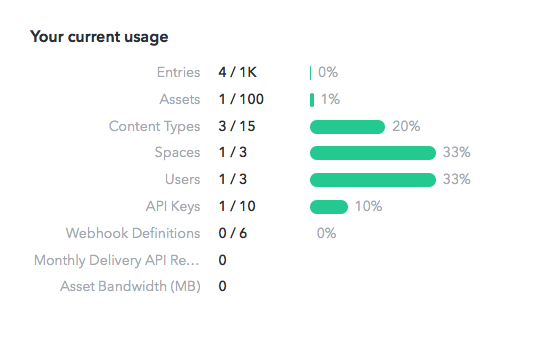
Example #2: Shippo
Shippo is, as they like to define themselves, the multi-carrier shipping API for USPS API, UPS API, FedEx API, DHL API and more. In the same way as Contentful, Shippo has stripped away much of the complexity around integration with multiple shipping providers. Ultimately, with a few lines of code, you can allow users to compare shipping rates, create labels, and track parcels.
Because of the shipping volume Shippo provides, they have been able to negotiate the best prices from their vendors. For example, in the case of USPS, they offer significant discounts off the regular shipping price. This is sometimes a game changer for smaller businesses which now get the chance to compete with larger online retailers.
Another big feature is the accompanying tracking API, which informs customers about the detailed status of the items they ordered. As in the case of Contentful, you can deliver this information through any channel you want. Picture this — what if you could embed delivery information in your shop, then, unlike the tracking information provided by a shipping vendor’s site, you would gain another opportunity to engage customers with other products.
These benefits speak for themselves. That’s why Shippo attracted big clients such as Weebly, Godaddy, and Mercari, as well as thousands of SMBs.
So now let’s check their offer in terms of our checklist:
Pricing — Shippo offers the most transparent pricing I’ve ever seen. It’s just $0.05 per actual shipping, that’s it. All other API calls like getting the shipping rates or validating the customer address are free. On top of that, you can negotiate for even better pricing when your shipping volume is significant. As shown previously, this is another variant of the pay-as-you-go model.
Onboarding — Shippo is another example of a well-documented API. The integration is seamless because of detailed guides and SDKs for every popular tech platform. Shippo teams support developers on the programmer Q&A portal Stack Overflow and with the developer mailing group. Besides, Shippo makes it easier to get started releasing the growing number of integrations with the most popular ecommerce platforms like Shopify, Weebly, BigCommerce, and WooCommerce, as well as marketplaces like Etsy.
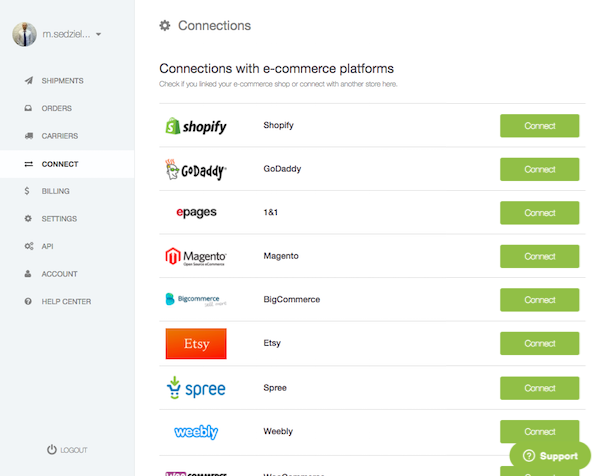
When it comes to non-developer onboarding, Shippo did another good job. Similarly to Contentful, the Shippo product team took care of the user experience (like Contentful, it seems that they take it seriously, even if it seems it’s not their core product). But if something’s still unclear, Shippo comes with a help center equipped with video tutorials. Their web admin console lets you review shipping statuses, manage your carriers accounts, and even create orders manually.
Enterprise features look as follows:
- Integrations — supported, REST API, data import/export tools
- Webhooks — supported
- Role-based access control — not supported
- Audit trail — not supported
- Reporting — not supported, but you can export data to CSV
- Self-hosting — not supported
- Support and SLA — ticketing system, 99.9% uptime SLA, limited phone support between 7am and 11am PST, Monday through Friday. Slack-based implementation support is also available. Enterprise customers have dedicated account managers. Stability and performance stats available at status.goshippo.com
Example #3: LaunchDarkly
Of all the platforms I’m presenting here, LaunchDarkly is the youngest one. This fact didn’t stop them from raising millions in funding and attracting customers, including names like Atlassian and Microsoft.
Why would big fishes like that want to launch in the dark? The concept of dark launches (or soft launches) became popular thanks to Facebook and Google and defines the process of releasing software to users under controlled conditions. Instead of showing the new feature to the whole user base, the new functionality is available to a limited audience while for others. It runs in the “dark” for days or weeks.
This way, companies can get feedback in an controlled environment and test the solution with less risk, before it affects the whole business. As LaunchDarkly CEO Edit Harbaugh says: “By wrapping a risky new infrastructure project with a flag, it can easily be stopped or turned off independent of code deployment.”
To control who can access the new functionality, feature flags are used. If active, then the selected group of users can see the feature, otherwise, they just use the “old” version of the software.
While it’s quite easy to implement this in your product, it takes much more effort to maintain it when you scale. Imagine dozens of flags and customer segments put into several experiments at the same time. Without a unified process, dark launches can go really really dark and eventually become an operational nightmare. Fortunately, LaunchDarkly wants to help you out.
They offer feature flags and an easy to use dashboard for product managers who design the experiments:
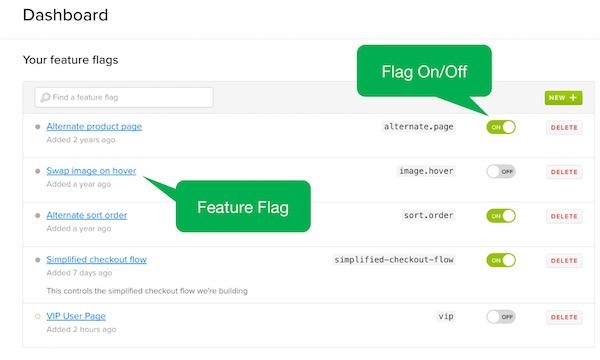
They go really deep when it comes to feature flag management. They let you configure every aspect of it, such as running percentage rollouts or defining specific customer targets. It’s also worth noting that all feature experiments are monitored and can be inspected using the audit trail at any time.
Pricing — unlike Contentful and Shippo, LaunchDarkly doesn’t charge you for the API requests. Instead, you pay for the number of monthly active users (MAU) you put into experiments. It starts at $79 for 10,000 users, and the higher plans come with a bigger userbase, more projects, and more team members who you can invite to collaborate. There’s also an enterprise plan whereby you can request millions in the user quota as well as additional custom features.
Onboarding – when it comes to dev onboarding, the guys and girls behind LaunchDarkly just nailed it. The interactive tutorial guides a developer through the process of setting your first feature flag. To make things even better it’s available for any popular programming language. On top of that, the developer hub helps out with developer-friendly tutorials and a profound FAQ. The nice thing is that they provide a testing environment for developers and QAs so you can dry run feature flags under even better control.
Product managers who design the flag experiments will also find the product easy to use. Although they don’t have the super detailed guides for non-devs, like Shippo and Contentful, you can always check out their support center or request a dedicated demo to familiarize yourself with all the features in-depth.
For, enterprise-grade features, LaunchDarkly has got you covered:
- Integrations — supported, REST API + relevant integrations (Optimizely, New Relic)
- Webhooks — supported
- Role-based access control — supported
- Audit trail — supported, from the Team plan ($299) upwards
- Reporting — supported, from the Growth plan ($699) upwards
- Self-hosting — supported, available in the Enterprise plan
- Support and SLA — support through ticketing system, guaranteed SLA in the Enterprise plan, phone and weekend support only in Enterprise. Status page without performance statistics at status.launchdarkly.com
Summary
You’ve seen how you can leverage modern ecommerce APIs to build your infrastructure. Although they cover three different fields, they have two things in common.
First, all of them have flexible pricing that scales with your needs.
Second, they put a hell of a lot of effort into saving your developers time. These features have one goal — to get you to market faster.
Hopefully, by examining these products against the API checklist you’ve learned how to approach other API platforms and how to talk to your CTO or software developers about your needs. This would seem to be a useful lesson on the eve of the “digital everything” days to come.
Thank you, Mike!
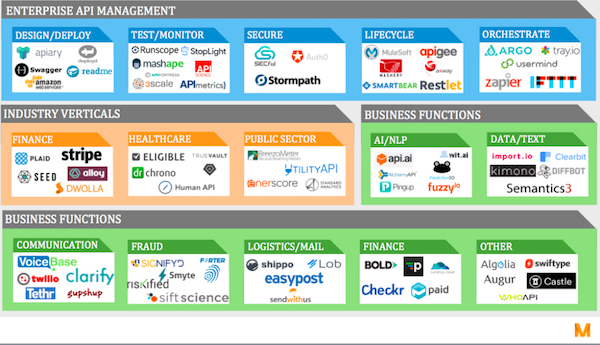

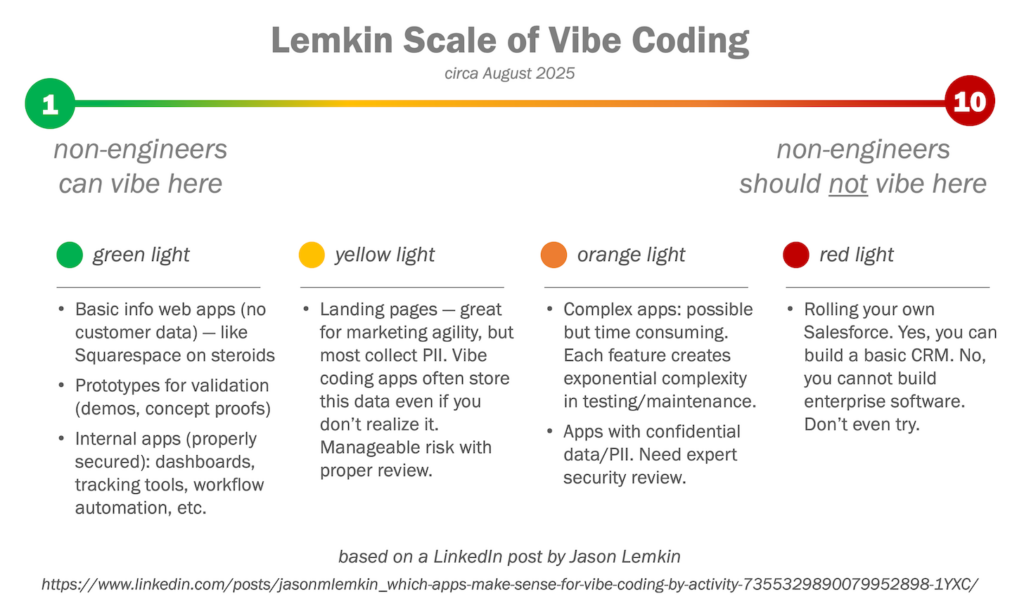

Hi Scott,
great article, always love reading this blog!
But I’ll be a bit biased now (as I’m working for this vendor), but in the Enterprise API Management I seem to be missing Azure API Management – https://azure.microsoft.com/en-us/services/api-management/. Any particular reason for that?
Txs!
Philip
Thanks, Philip.
That API graphic is actually from the TechCrunch article linked above (https://techcrunch.com/2016/05/21/the-rise-of-apis/). It’s at least a year old, so hopefully the folks who created it will update it.
Will definitely note Microsoft as an API management provider for my own research!